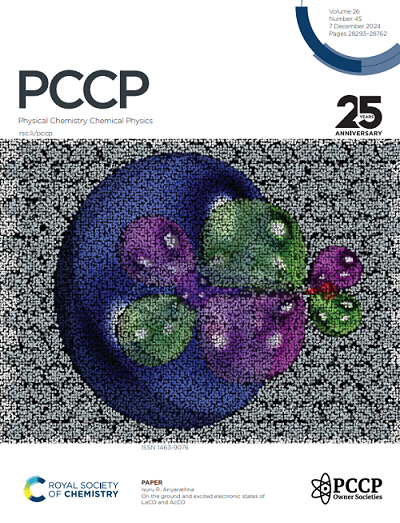Negative thermal expansion and linear compressibility in 1H-imidazol-3-ium 2-hydroxybenzoate with a helical network of hydrogen bonds
IF 2.9
3区 化学
Q3 CHEMISTRY, PHYSICAL
引用次数: 0
Abstract
1H-imidazol-3-ium-2-hydroxybenzoate (imidazolium salicylate or SalImi) is an organic molecular crystal with helical hydrogen-bonded network. Crystallographic structure and quantum theory of atoms in molecule calculations are used to analyse the helical structure parameters. Negative area and negative linear temperature expansion range from 300 to 180 K and 180 to 100 K, respectively. Hydrogen bonding coupling below 180 K is associated with the temperature change in crystal behaviour. The crystal displays negative linear compressibility in the a-direction. The negative temperature expansion and negative linear compressibility are described by the "helical" mechanism. X-ray diffraction and vibrational spectroscopy were used for the structural and macroscopic analysis. The paper presents an analysis of the crystalline structure in the temperature range from 100 to 300 K and pressures from atmospheric to 2.27 GPa. In addition, the vibrational structure was analysed using Raman and infrared spectroscopy in the temperature range from 5 to 300 K and pressures from atmospheric to 3.56 GPa.求助全文
约1分钟内获得全文
求助全文
来源期刊

Physical Chemistry Chemical Physics
化学-物理:原子、分子和化学物理
CiteScore
5.50
自引率
9.10%
发文量
2675
审稿时长
2.0 months
期刊介绍:
Physical Chemistry Chemical Physics (PCCP) is an international journal co-owned by 19 physical chemistry and physics societies from around the world. This journal publishes original, cutting-edge research in physical chemistry, chemical physics and biophysical chemistry. To be suitable for publication in PCCP, articles must include significant innovation and/or insight into physical chemistry; this is the most important criterion that reviewers and Editors will judge against when evaluating submissions.
The journal has a broad scope and welcomes contributions spanning experiment, theory, computation and data science. Topical coverage includes spectroscopy, dynamics, kinetics, statistical mechanics, thermodynamics, electrochemistry, catalysis, surface science, quantum mechanics, quantum computing and machine learning. Interdisciplinary research areas such as polymers and soft matter, materials, nanoscience, energy, surfaces/interfaces, and biophysical chemistry are welcomed if they demonstrate significant innovation and/or insight into physical chemistry. Joined experimental/theoretical studies are particularly appreciated when complementary and based on up-to-date approaches.
 求助内容:
求助内容: 应助结果提醒方式:
应助结果提醒方式:


